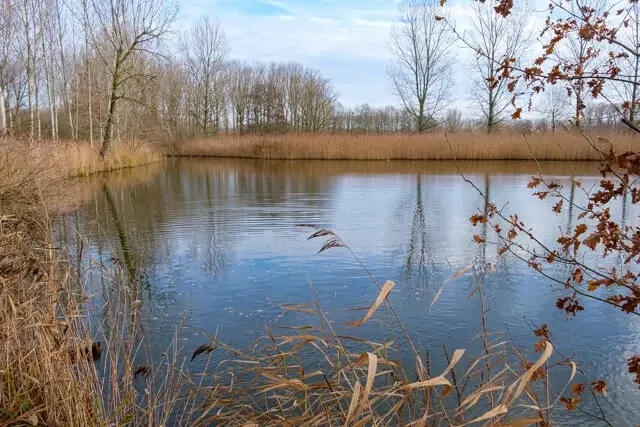Walking route
Sombeke route.


Sombeke route.
This walk goes from the famous Mira Bridge along the Groot Broek and the Meulendijkbroek to the mud flats and salt marshes of the Durme. The walk follows the banks of the Durme for a long time and then goes in the direction of Sombeke along historic roads such as the Sterrewegel. From Sombeke the walk continues past the castle domain of Sombeke back to the starting point.
Distance: 10 km.
Time: 2h30.
Grade: Easy.
Type: Circular.
Gps Track: Yes.
Route description: Yes.
Wheelchair: Not suitable.
Dog: Allowed on leach.
Height gain: Flat.
Trail: Paved and unpaved.
Marking: Hexagon.
Hiking shoes recommended.
Sombeek meersen..
You cross the Mira Bridge and go along the Groot Broek to the Sombeek Meersen. On the dike you walk along the Meulendijkbroek and you arrive at the banks of the Durme. You now follow the towpath for a long time along the mud flats and salt marshes of the Durme. Just before the buildings, the route returns and goes along a wide dirt road in the direction of higher-lying fields and meadows. You follow old historic roads here, such as the Sterrewegel, which takes you via swing gates and bridges to Sombeke. In Sombeke you will come to the Sint-Rochuskerk and you can admire the bronze statue of the famous painter Edmond Verstraeten. You now continue through the Liatuin, a former monastery garden and past the castle of Sombeek, which is privately owned. On the dike it goes back in the direction of the starting point.
Download PDF for route description and map.
Take cyclists into account on the towpath.
POI 1 - Mira bridge.
The Mira Bridge was built in the period 1896-1900. The bridge, however, received its name and fame thanks to the feature film Mira, the film adaptation from 1971 of the book 'De teleurgang van de Waterhoek' by Stijn Streuvels. The bridge was protected as a monument in 1991 and was restored in 2002.
No additional information.
POI 2 - Groot Broek.
The Meulendijkbroek in Waasmunster-Sombeke is part of the Sigma area Groot Broek, which is being poldered. That means that the area is returned to the Durme. Water flows in and out of the area to the rhythm of ebb and flow every day along openings in the old Durme dike. The ring dike stops the water. Under the influence of the tide a constantly changing landscape develops: at low tide you see swallows and salt marshes, at high tide a large surface of water where reeds and willow trees protrude above. During storm tides, Groot Broek will collect excess water from the Durme so that the environment is spared from flooding.
No additional information.















































